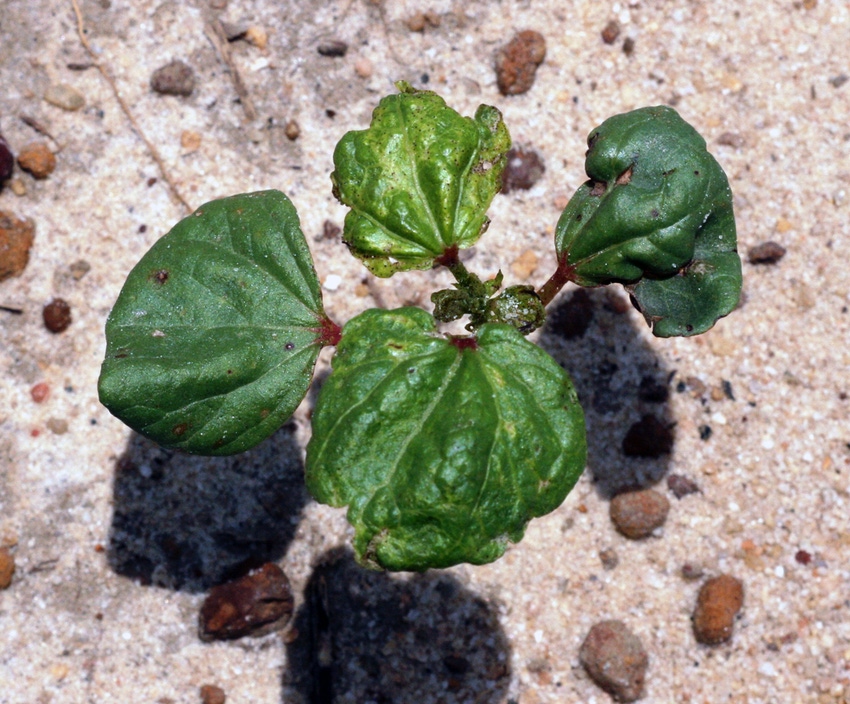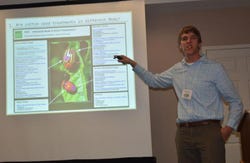
Tobacco thrips resistant to neonicotinoid class of insecticides are proving to be more of a problem for cotton producers in North Carolina and across the Southeast.
During the annual convention of the North Carolina Agricultural Consultants Association in Raleigh, George Kennedy, William Neals Reynolds distinguished professor of entomology from North Carolina State University, shared results of research conducted in 2014 and 2015 in the 30 counties where cotton is grown in North Carolina. The neonicotinoid resistance research, which will continue this year, seeks to find answers to what is driving resistance and what can be done about it.

George Kennedy, William Neals Reynolds distinguished professor of entomology at N.C. State, says the problem of neonicotinoid-resistant thrips, is still unfolding.
“Neonicotinoid resistance is common in North Carolina. It’s common across the Southeast. It’s common in the Mid-South. But it’s not everywhere,” Kennedy told the crop consultants.
“The problem is still developing; it’s still unfolding. The response to it is you have to use other measures of control; those are insecticides. One of the ways farmers are responding now is using more neonicotinoids. That’s a temporary solution that’s not going to last,” Kennedy said. “We need to learn what is driving resistance in some areas more than others.”
Kennedy noted that a number of farmers also use additional neonicotinoid in furrow applications and foliar insecticide treatments in addition to neonicotinoid seed treatments.
“This represents a significant increase of active ingredient applied to cotton, which carries with it not only dollar costs but potential environmental concerns, given all the scrutiny that’s going on with insecticide use and neonicotinoid use at this point,” Kennedy said. “High-dose insecticide programs will have unintended consequences for resistance and considerable external costs. Continued monitoring will be critical to understand and address emerging resistance.”

Anders Huseth
Kennedy made it clear that a large scale shift to imidacloprid treatments from thiamehtoxam treatments is not a change in the mode of action. “This change will not be a long-term solution,” he stressed.
Echoing Kennedy’s point, Anders Huseth, a post-doctoral research scholar in entomology at N.C. State, explained that the neonicotinoid cotton seed treatments used in North Carolina all fall within the same mode of action class.
“We don’t have a very diverse toolbox for thrips management in this system. Moreover if we add Admire Pro, which is an imidacloprid, that falls within that same mode of action class, we’re just adding more insecticide from the same mode of action,” he said.
“As we move forward in the process of several years of using the same mode of action class, what we see in this particular system is an indication of an erosion in the susceptibility of the populations,” Huseth said. “In North Carolina right now, we are seeing very few days of control with neonicotinoid seed treatments. Growers are having to add more insecticides to really manage those populations. Those added insecticides are masking the failure potential of these populations. This sub-lethal window is continually selecting for resistance.”
Huseth explained that as the cotton plant grows, the insecticide becomes more dilute within the seedling. “While you might see a loss of control, that insecticide is still present in the plant for that entire duration days after planting,” he added.
An important key to remember, Huseth stressed, is that neonicotinoids do not target adult thrips. “The damage that growers see is a direct result of the larvae. The damage is caused by the larvae feeding on these early cotton seedlings,” he said.
About the Author(s)
You May Also Like






